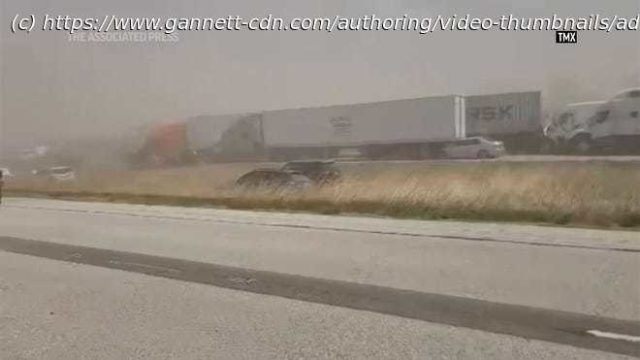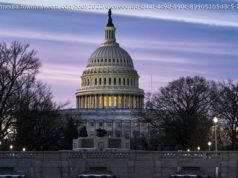Array
Climate models show the United States will likely see more dust storms as rising temperatures dry out the ground and rains fall less frequently.
The National Weather Service office in Springfield, Illinois, issued a blowing-dust warning Monday for the first time ever after a blinding dust storm sprang up south of Springfield, Illinois, causing a deadly highway pileup. It may not be the last such warning the office issues.
The crashes killed at least six people and injured dozens Monday morning. The highway didn’t open again until Tuesday.
The horrific crashes involved 40 to 60 passenger cars and multiple tractor-trailers, two of which caught fire. At least 30 people were taken to hospitals with injuries, and Montgomery County authorities said 10 helicopters were called to the scene in addition to a hazardous materials team to suppress fires.
Climate change researchers have warned of an increase in such events for years.
Though it’s unclear to what extent climate change may have been involved in the Illinois storm, climate models show the United States probably will see more such storms as rising temperatures dry the ground and rain becomes less frequent.Hotter, drier weather coming
Dust storms of course are nothing new to farmland.
“In general, dust storms in agricultural areas are not uncommon and will arise during strong wind events if the topsoil is dry and if the soil is bare. These conditions occur during a drought and before vegetation starts growing, including in early spring,” said Jasper Kok, a professor in the Department of Atmospheric and Oceanic Sciences at the University of California, Los Angeles. Kok studies climate interactions and wind-blown sand and dust.
But more such storms may be on the horizon.
In 2017, scientists projected climate change will increase dust activity in the southern Great Plains from spring to fall because of reduced rain, more bare lands and increased wind speeds. In the Central Great Plains, higher temperatures that dry out the earth contribute to an increase in dust concentrations.
“You have high temperatures and less water based on changing precipitation rates, so that could cause an increase in the likelihood of dust events, said Bing Pu, a professor of geography and atmospheric science at the University of Kansas, who has modeled the influence of climate change on dust storms.






